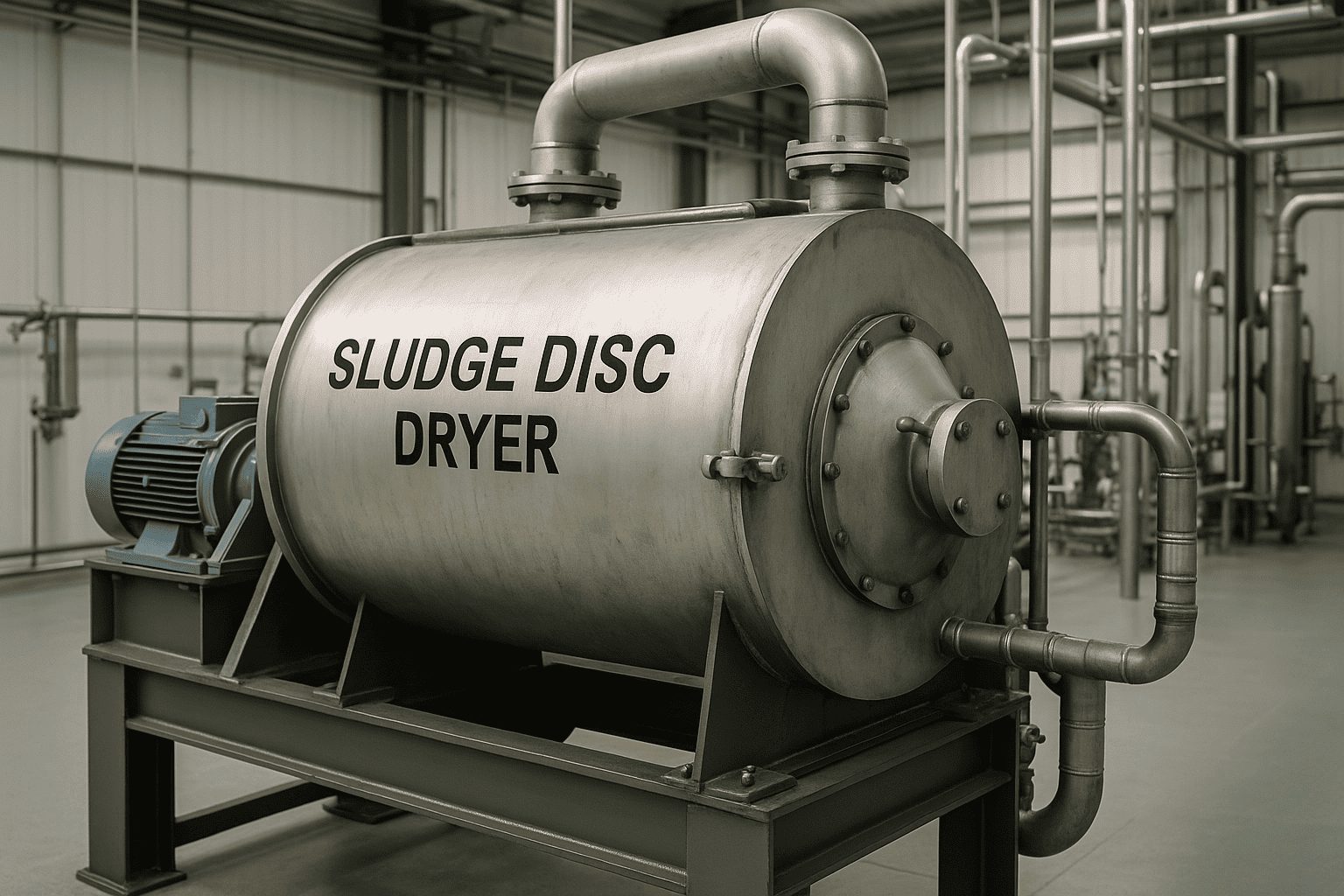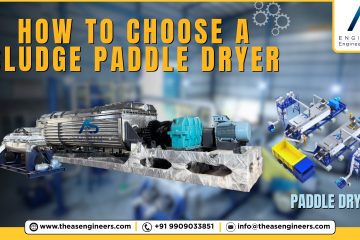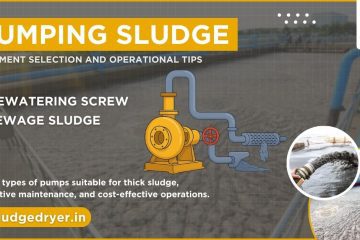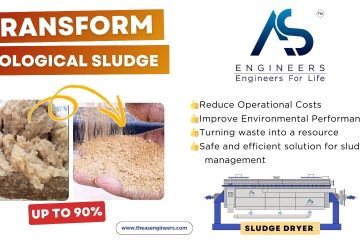When industries deal with large volumes of wastewater, sludge management becomes one of the toughest challenges. Traditional drying methods often consume excessive energy, require bulky setups, and fall short on efficiency. That’s where the sludge disc dryer comes into play.
A sludge disc dryer is designed to handle high-moisture sludge in a compact, energy-efficient, and continuous process. Whether you’re operating in wastewater treatment, chemical production, or food processing, this technology can dramatically reduce disposal costs, minimize environmental impact, and even enable resource recovery.
In this guide, you’ll learn exactly how sludge disc dryers work, their advantages over conventional drying systems, industries that benefit most, and practical tips for selecting the right system. Along the way, we’ll address common misconceptions, share real-world insights, and highlight why this equipment is becoming a cornerstone of sustainable sludge management.
By the end of this article, you’ll not only understand the working principle of a sludge disc dryer but also have a clear roadmap for making informed decisions—whether you’re an engineer, plant operator, or business owner looking for cost-effective sludge drying solutions.
How Does a Sludge Disc Dryer Work?
Working Principle of a Sludge Disc Dryer
At its core, a sludge disc dryer is a thermal drying system that uses indirect heating to evaporate water from sludge. Instead of direct flame or hot gases, it transfers heat through metal surfaces, making it safer, more efficient, and less polluting.
Here’s a step-by-step breakdown of how it works:
- Feeding the Sludge
- Wet sludge, often with moisture content as high as 70–80%, enters the dryer through a controlled feeding system.
- The design ensures steady flow, preventing clogging or uneven drying.
- Heat Transfer via Hollow Discs
- Inside the drying chamber, a rotating shaft holds multiple hollow discs.
- These discs are heated internally with steam, hot oil, or another heating medium.
- As they rotate, they maximize the contact surface area with sludge, ensuring rapid and uniform heat transfer.
- Sludge Agitation & Mixing
- The rotation of discs continuously agitates and mixes the sludge.
- This prevents sticking, enhances exposure to heated surfaces, and promotes even drying.
- Moisture Evaporation
- Heat from the discs evaporates water within the sludge.
- Vapors are collected and directed to a condenser or dust control system, minimizing environmental emissions.
- Discharge of Dried Product
- Once dried to the required level (often 10–20% final moisture content), sludge is discharged.
- The dried sludge can be disposed of safely, used as a fuel substitute, or further processed depending on industry needs.
Why the Disc Design Matters
- High Heat Transfer Efficiency: The hollow disc structure provides large heat exchange surfaces in a compact footprint.
- Energy Savings: Indirect heating reduces energy loss, often resulting in 20–30% lower energy consumption compared to conventional dryers.
- Scalability: Disc dryers handle a wide range of sludge volumes, making them suitable for both municipal plants and large-scale industries.
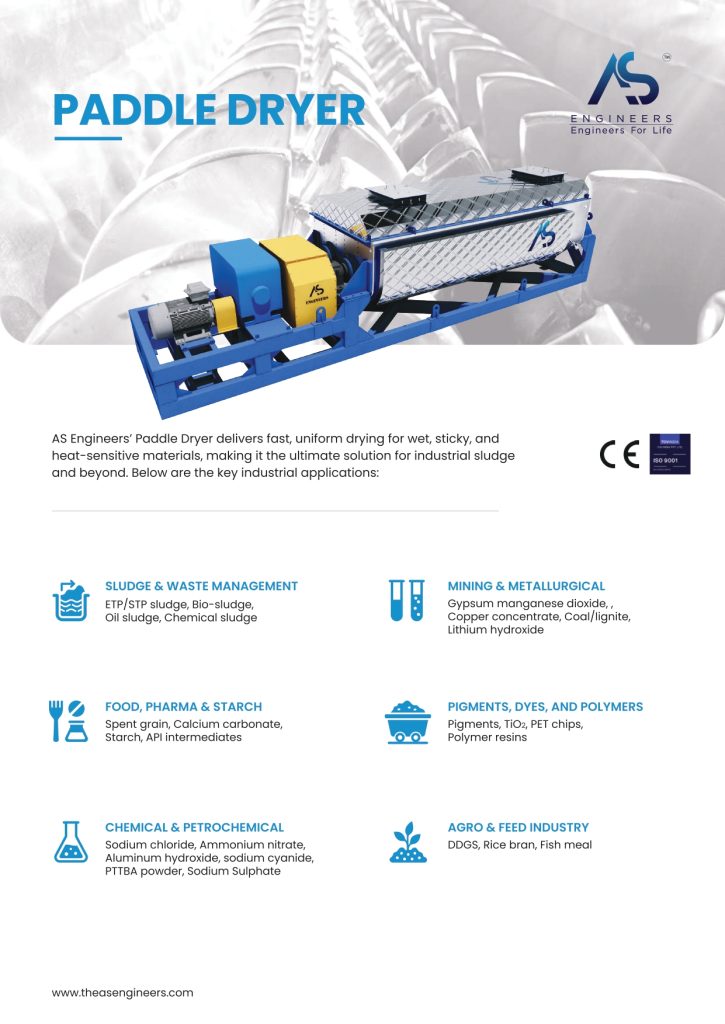
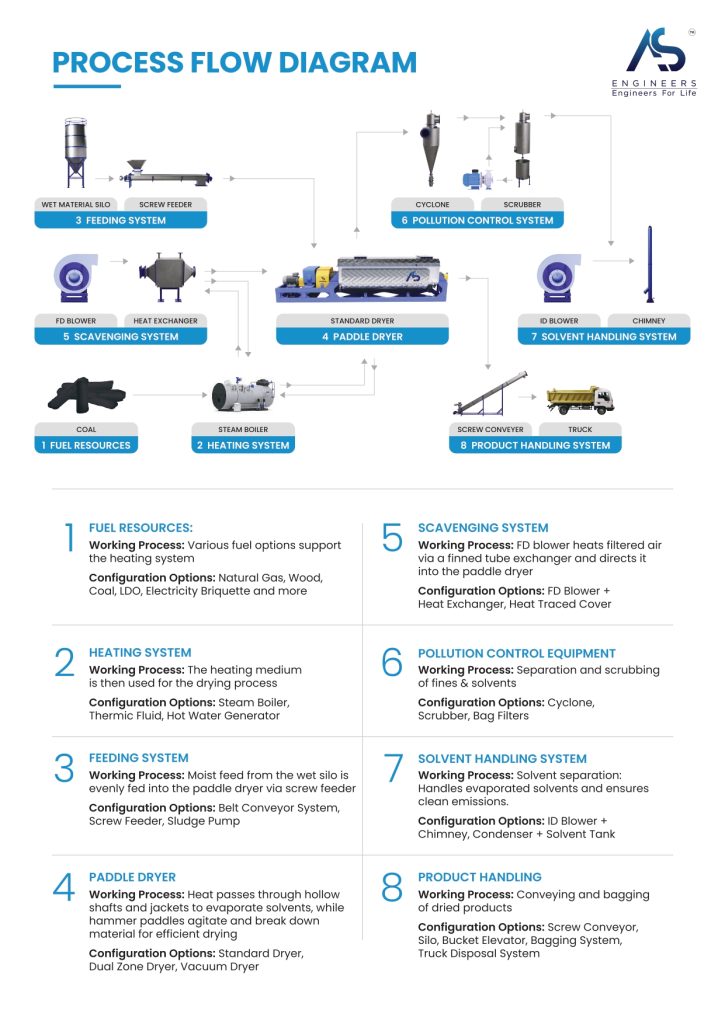
Key Benefits of Using a Sludge Disc Dryer
Objective
- Highlight the main advantages of sludge disc dryers.
- Show tangible benefits for plant operators, managers, and business owners.
- Reinforce why this equipment is superior to conventional sludge drying methods.
1. Energy Efficiency and Cost Savings
- The hollow disc design offers a large heat transfer surface area in a compact space, allowing more sludge to dry with less energy.
- Indirect heating prevents unnecessary heat loss, often achieving 20–30% lower energy consumption compared to traditional dryers.
- Reduced energy use directly translates into lower operating costs and a shorter payback period.
2. Compact and Space-Saving Design
- Unlike bulky rotary or belt dryers, sludge disc dryers provide high capacity within a smaller footprint.
- This compactness makes them suitable for facilities with limited space while still handling large sludge volumes efficiently.
3. Consistent and Uniform Drying
- Continuous mixing and agitation of sludge by rotating discs ensure even exposure to heat.
- The result is a uniformly dried end product without wet patches, reducing the risk of incomplete drying and operational issues downstream.
4. Environmental Compliance
- The system captures vapors and channels them into condensers, scrubbers, or dust collectors, minimizing emissions.
- This not only ensures compliance with environmental regulations but also enhances worker safety by reducing odor and air pollutants.
5. Versatility Across Industries
- Sludge disc dryers are not limited to wastewater treatment plants.
- They are widely used in:
- Chemical industries for drying process residues.
- Food and beverage industries for by-product management.
- Power plants for handling fly ash and sludge.
- Pharmaceuticals for safe disposal of high-moisture waste.
6. Potential for Resource Recovery
- Dried sludge can be repurposed as an alternative fuel in boilers, cement kilns, or thermic fluid heaters.
- Certain industries also recycle dried sludge as a raw material in construction or agriculture, turning waste into a resource.
Common Misconceptions About Sludge Disc Dryers
Myth 1: “Sludge disc dryers consume too much energy.”
Fact: While drying is naturally energy-intensive, disc dryers are among the most energy-efficient systems available. Their hollow disc design maximizes heat transfer, and indirect heating reduces losses. In fact, they often consume 20–30% less energy compared to rotary or belt dryers.
Myth 2: “The system is too complex to operate.”
Fact: A sludge disc dryer may look sophisticated, but its operation is straightforward. With automated feeding, drying, and discharge controls, operators only need routine checks. Most manufacturers also provide training and after-sales support, ensuring smooth day-to-day use.
Myth 3: “Maintenance costs are very high.”
Fact: Since disc dryers use indirect heating, they face less wear and tear from direct flames or abrasive gases. With regular preventive maintenance, the system delivers long operational life and low downtime. In many cases, maintenance costs are actually lower than with other drying systems.
Myth 4: “They can only be used in wastewater treatment plants.”
Fact: Sludge disc dryers are highly versatile. They are widely used in chemicals, food, pharmaceuticals, power plants, and mining industries. Any process generating wet sludge or by-products can benefit from this technology.
Myth 5: “The dried sludge has no practical use.”
Fact: Dried sludge can be reused as:
- Alternative fuel in boilers, kilns, or heaters.
- Construction material additive, especially in cement production.
- Soil conditioner or fertilizer base, depending on sludge composition.
This makes it not just a disposal solution but also a resource recovery opportunity.
Key Applications and Industries Using Sludge Disc Dryers
1. Municipal Wastewater Treatment Plants
- One of the largest users of sludge disc dryers.
- Municipal plants deal with high sludge volumes containing 70–80% water content.
- Disc dryers reduce sludge volume significantly, cutting transport and disposal costs.
- Many cities now adopt sludge disc dryers as part of zero-waste and sustainability initiatives.
2. Chemical Industry
- Produces a variety of wet by-products, often hazardous.
- Disc dryers safely dry sludge while capturing vapors to prevent environmental contamination.
- Example: In fertilizer plants, dried sludge is used in energy recovery systems.
3. Food and Beverage Industry
- Handles organic sludge from food processing, breweries, and dairies.
- Disc dryers convert high-moisture by-products into manageable, stable solids.
- In some cases, dried material is reused as animal feed supplements or energy feedstock.
4. Pharmaceuticals and Biotechnology
- Pharmaceutical sludge often contains solvents and sensitive residues.
- Disc dryers provide controlled drying under indirect heating, ensuring safety and compliance with strict regulations.
5. Power Plants and Energy Sector
- Disc dryers handle ash slurry, fly ash sludge, and effluent residues.
- Dried sludge is sometimes repurposed as an auxiliary fuel in boilers or kilns, reducing coal dependency.
6. Mining and Metallurgy
- Ore processing and metal recovery generate slurries and tailings.
- Disc dryers help in volume reduction and stabilization, making transport and storage safer and more economical.
7. Pulp and Paper Industry
- Produces massive amounts of pulp sludge with high fiber and moisture.
- Disc dryers transform this waste into a dry, combustible material that can be reused as boiler fuel, supporting energy recovery.
How to Choose the Right Sludge Disc Dryer
Objective
- Provide actionable guidance for decision-makers on selecting a sludge disc dryer.
- Cover technical, operational, and financial criteria.
1. Define Your Sludge Characteristics
Before selecting a dryer, assess:
- Moisture content of sludge (initial and target).
- Sludge composition (organic, inorganic, hazardous).
- Flow rate and volume (continuous or batch processing).
- Physical properties (viscosity, abrasiveness, stickiness).
Example: A municipal plant with fibrous sludge requires a design optimized for high-moisture fibrous material, while a chemical plant may need corrosion-resistant construction.
2. Select the Heating Medium
Sludge disc dryers operate with different heating media:
- Steam – common in industries with existing boilers.
- Hot oil/thermic fluid – preferred for precise temperature control.
- Hot water – used for low-temperature drying needs.
The choice impacts operating cost, energy efficiency, and integration with your existing system.
3. Evaluate Capacity and Footprint
- Capacity should align with your daily sludge generation.
- Compact designs are better for plants with space constraints.
- Consider future scalability — opt for systems that can handle expansion in sludge volume.
4. Energy Efficiency and OPEX
- Compare specific energy consumption (kWh/kg of evaporated water) across models.
- Look for dryers with vapor recovery systems to minimize heat loss.
- Estimate payback period based on disposal cost savings and energy reduction.
5. Material of Construction
- Choose corrosion-resistant materials like stainless steel for chemical sludge.
- For abrasive sludge, opt for reinforced or wear-resistant alloys.
6. Automation and Control
- Advanced systems offer PLC or SCADA integration for remote monitoring.
- Automation ensures consistent performance, reduces manpower, and minimizes human error.
7. After-Sales Service and Support
- Always consider the availability of local service engineers and spare parts.
- A dryer is a long-term investment; reliable after-sales support ensures smooth operations.
Real-World Case Study & Personal Insight
Case Example: A Municipal Wastewater Plant
A mid-sized city in India faced a growing problem: its wastewater treatment plant generated nearly 150 tons of wet sludge per day, most of which had to be hauled to landfills. The sludge contained about 75% water, making transport costly and environmentally unsustainable.
The city installed a steam-heated sludge disc dryer to address the issue. Within six months:
- Sludge volume was reduced by over 60%.
- Transport costs dropped by 40%.
- The dried sludge was repurposed as fuel for a cement kiln, generating additional revenue.
Plant operators, initially skeptical about handling the new equipment, reported that the system was surprisingly easy to operate and required less maintenance than expected. The city now uses the savings to fund other sustainability projects.
Personal Insight
In my own experience working with sludge management projects, I’ve noticed that decision-makers often underestimate the value of uniform drying. They focus on cost or capacity alone, but what truly matters is how the dryer integrates into the plant’s overall efficiency.
For instance, one client was concerned about frequent clogging in their old rotary dryer. When they shifted to a disc dryer, the continuous agitation of the discs eliminated clogging, and downtime reduced dramatically. That one change alone improved plant reliability and gave operators confidence that the sludge drying step would no longer be a bottleneck.
Frequently Asked Questions (FAQs)
1. What is a sludge disc dryer?
A sludge disc dryer is an indirect thermal drying system that uses hollow, steam- or oil-heated discs to evaporate moisture from sludge. It provides efficient, uniform drying in a compact footprint while reducing energy use and emissions.
2. How does a sludge disc dryer work?
The dryer works by feeding wet sludge into a chamber containing rotating hollow discs. Heat is transferred through the discs, while their rotation agitates the sludge for uniform drying. Vapors are collected and treated, and the dried sludge is discharged as a stable, low-moisture product.
3. What industries use sludge disc dryers?
Sludge disc dryers are widely used in wastewater treatment, chemicals, food processing, pharmaceuticals, power plants, pulp & paper, and mining industries. They are suitable for any process generating high-moisture sludge.
4. What are the benefits of using a sludge disc dryer?
Key benefits include:
- Lower energy consumption (20–30% savings).
- Compact design with high throughput.
- Uniform, consistent drying.
- Reduced sludge disposal and transport costs.
- Environmental compliance with vapor capture.
5. Can dried sludge be reused?
Yes. Depending on its composition, dried sludge can be used as alternative fuel in kilns and boilers, as a raw material in cement or construction, or even as a soil conditioner in agriculture (after proper testing and compliance checks).
6. What factors should I consider when choosing a sludge disc dryer?
Consider:
- Sludge type, composition, and volume.
- Desired moisture reduction level.
- Heating medium availability (steam, hot oil, water).
- Energy efficiency and operating cost.
- Material of construction (corrosion or abrasion resistance).
- Availability of after-sales service and spare parts.
7. How much maintenance does a sludge disc dryer require?
With proper installation and preventive checks, maintenance is minimal. Since it uses indirect heating, wear and tear are lower than in direct dryers. Most systems need only routine inspections, lubrication, and cleaning to ensure long service life.
Conclusion
Managing sludge is one of the biggest challenges industries face, both from a cost and environmental standpoint. The sludge disc dryer stands out as a solution that combines efficiency, compact design, and sustainability. By using indirect heat transfer through hollow discs, it ensures uniform drying, reduced energy consumption, and reliable performance across a wide range of industries.
Whether you operate a municipal wastewater treatment plant, a chemical facility, or a food processing unit, investing in a sludge disc dryer can help you cut disposal costs, recover resources, and meet environmental compliance with ease.
If you’re evaluating sludge drying solutions, now is the time to explore how a sludge disc dryer can fit into your operations.
- Share your thoughts or questions in the comments below.
- Reach out to us for tailored guidance on selecting the right system for your plant.
- Explore our related resources on sludge drying, paddle dryers, and waste management solutions to make an informed choice.
Your next sludge management strategy could be the one that saves costs, reduces environmental impact, and turns waste into opportunity.

